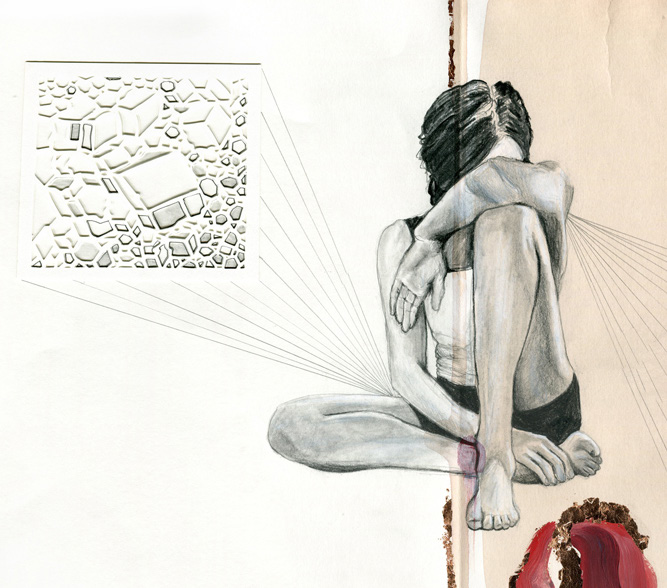By Terrill Smith (Contributor) – Email

On Thursday, October 29, four exhibitions opened at Abbotsford’s The Reach Gallery Museum as part of its Fall / Winter Exhibition. One of the exhibitions, Art on Demand 1:4, is both curated by, and features artwork from, UFV alumni.
The Art on Demand series, described by The Reach as “a rotating, café-style exhibition,” features the work of artists belonging to Emerge, which is an initiative for up-and-coming artists and aspiring arts professionals between the ages of 16 and 30. The initiative gives its members the opportunity to display their artwork at The Reach for anywhere from four to six weeks.
Each Art in Demand exhibition deals with vastly different themes and topics, with curator Alisha Deddens explaining that Art on Demand 1:4 “contemplates what it means to be fully human through examining the relationship between remnants, memory, and the body as a potent source of meaning.” Deddens, who graduated from UFV with a BFA in 2013, notes the significance of materials in this examination of humanity. “I think the use of unconventional materials is important to both artists, and helps to define their pieces,” she explains. And unconventional the materials are indeed.
Daniel Hurst, who graduated from Trinity Western University with a BA in art and design in 2013, presents work in Art on Demand 1:4 created out of human hair. Hurst affixed the hair to seared dura-lar polyester film, creating abstract forms resembling fingerprint scans. Through this, he explores the spiritual and scientific significance of bodily remnants. Deddens elaborates that “In some cultures, hair trimmings are often burned or buried, because it is believed that these remnants, although separated from the body, still carry the spirit of that person. Similarly, forensic science indicates that DNA found in hair carries something of a person’s essence through specific genetic coding.” Ultimately, through using human hair, Hurst joins the disparate knowledge systems of science and spirituality into one work to suggest that bodily remnants say something about our essential selves.
Fiona Moes Pel, on the other hand, explores humanity and identity almost entirely through the lens of spirituality. Moes Pel, who graduated from UFV with a BFA in 2010 and SFU with a BEd in 2012, “seeks to create images that ponder what it means to be viscerally human and spiritually attuned,” writes Deddens in her curatorial statement. She goes on to write that “Moes Pel depicts a variety of prayer poses, integrating this imagery with fleeting forms found in the natural landscape. Shapes such as tree shadows, snowcaps, and wave rhythms remind us that we apprehend our environment through our senses, and are part of something much larger than ourselves.” Like Hurst, Moes Pel used unconventional materials to facilitate her exploration of humanity and identity, affixing to wine-stained paper things such as graphite, charcoal, copper leaf, acrylic, and thread.
Deddens currently holds a curator position on the Emerge leadership team. When asked how it has been helpful, Deddens said that “Emerge is a great way for up-and-coming artists, arts professionals, and arts enthusiasts to be involved in their local artistic community, as well as give them the experience and opportunities new graduates and young artists might not otherwise get.”
Art on Demand 1:4 runs until Sunday, November 29, at The Reach Gallery Museum on 32388 Veterans Way in Abbotsford. Admission is free.


